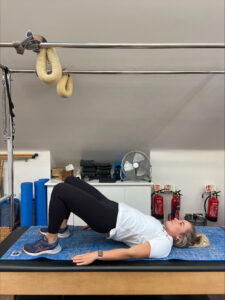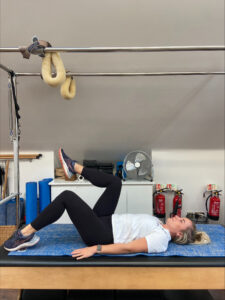Written by Lucy Metcalfe, Physiotherapist and APPI Pilates Instructor
At APPI Clinics, we often are presented with postpartum women who notice weakness in their abdominal wall, doming off the stomach or who are wanting to return back to exercise.
The information around abdominal separation is often very scary and very vast. Therefore, our Physiotherapist and APPI Pilates instructor Lucy Metcalfe is here to de-bunk the myths and provide you with information on how to strengthen and improve the abdominal wall post pregnancy.
What is it Diastasis or DRAM?
- Increased laxity and stretch (thinning and widening) of the abdominal muscle wall, Linea alba (connection of muscles) and connective tissue and ligaments.
- Increased distance between the left and right side of the abdominal muscles due to stretch.
Why does this happen?
The pregnant body undergoes hormonal, anatomical and physiological variations, to allow more room for the foetus to grow and develop.
How common is this?
100% of women will have a DRAM at 35 week’s gestation. 45% of women will have DRAM at 6 months postpartum. 30% of women will have DRAM at 12 months postpartum.
How Do I know if I have Diastasis Recti?
You may notice some small bulging or ‘doming’ of the middle part of your abdominal muscles with movement, especially when lifting your upper body, such as getting up from a lying position.
There also may be an area in the middle of your abdominal area which is softer. If the muscles are separated your fingers may sink into the tissue rather than meeting resistance. You may also be able to feel the edge of the muscles when doing this.
The main consideration if you have a Diastasis Recti relates to how well these muscles are functioning, most importantly in providing control to your back and pelvis. Those with abdominal separation and poor core muscle control may experience lower back pain and difficulty with some movements or activities.
How can I help Diastasis Recti?
Recent studies have shown that it is important to load and strengthen the abdominal wall to improve the abdominal strength and thickness. This will not worsen your inter-recti distance (gap). It will improve the strength and tension you are able to create to pull the tummy muscles in. The following Pilates mat exercises provide some safe and effective exercises that can help.
Abdo prep

Oblique prep

Deadbug

Glute bridge prep

Scissors

Knee hovers

What do I do if I think I have Diastasis Recti?
If you think you may be experiencing abdominal separation, your first step is to book an appointment with a Physiotherapist who is specially trained in assessing for a Diastasis Recti.
From there, your Physiotherapist can advise you and put together a customised treatment and exercise plan for you.


